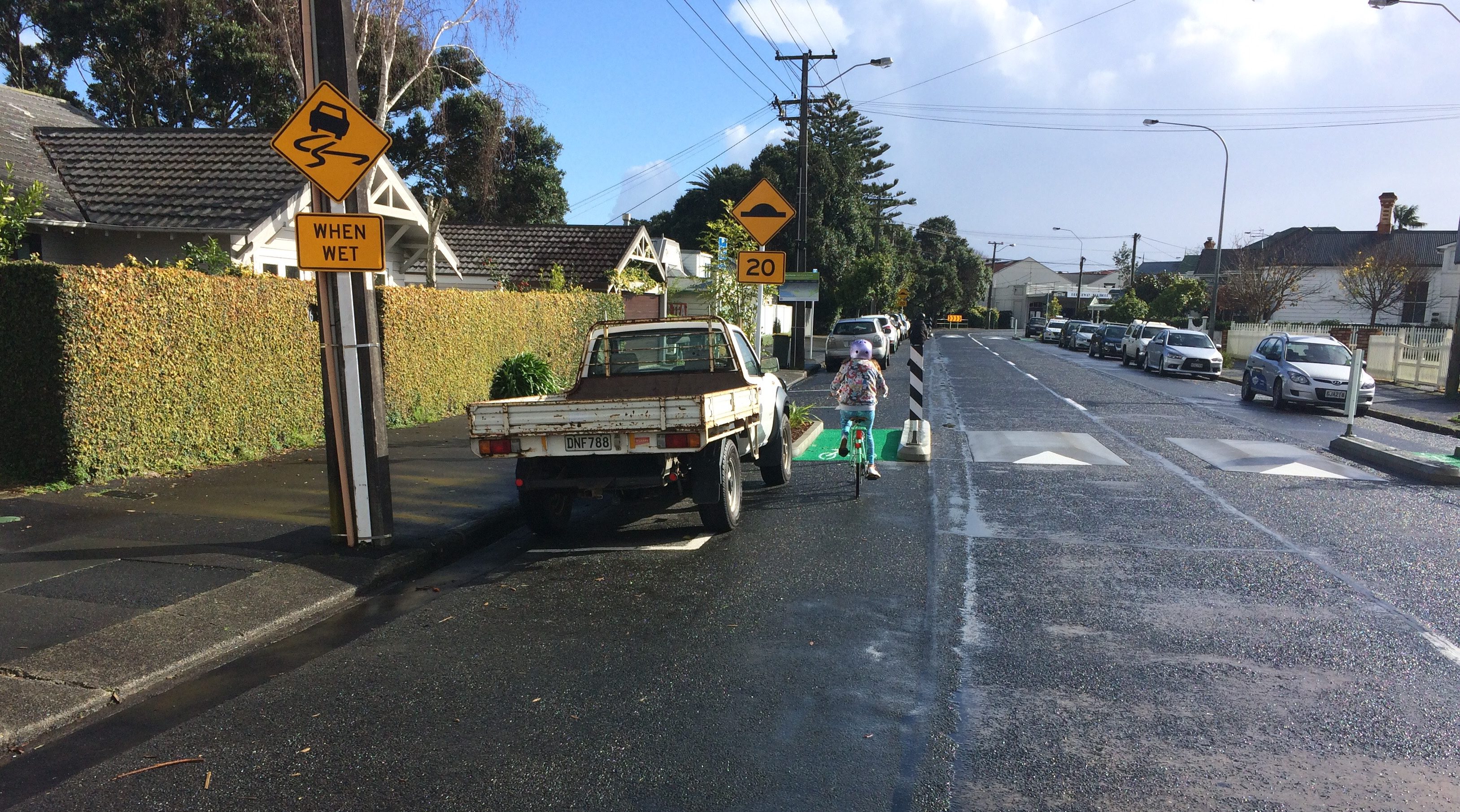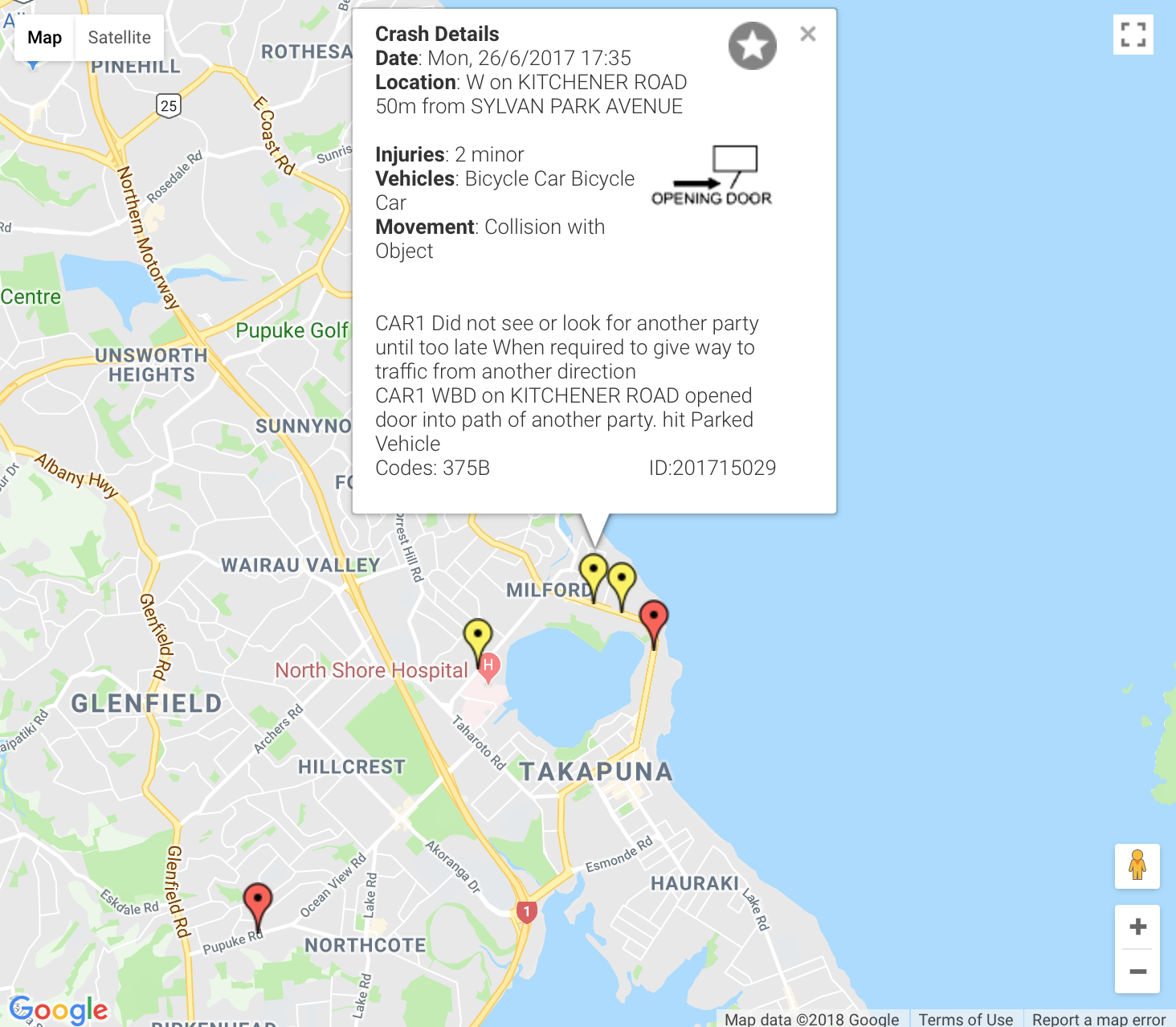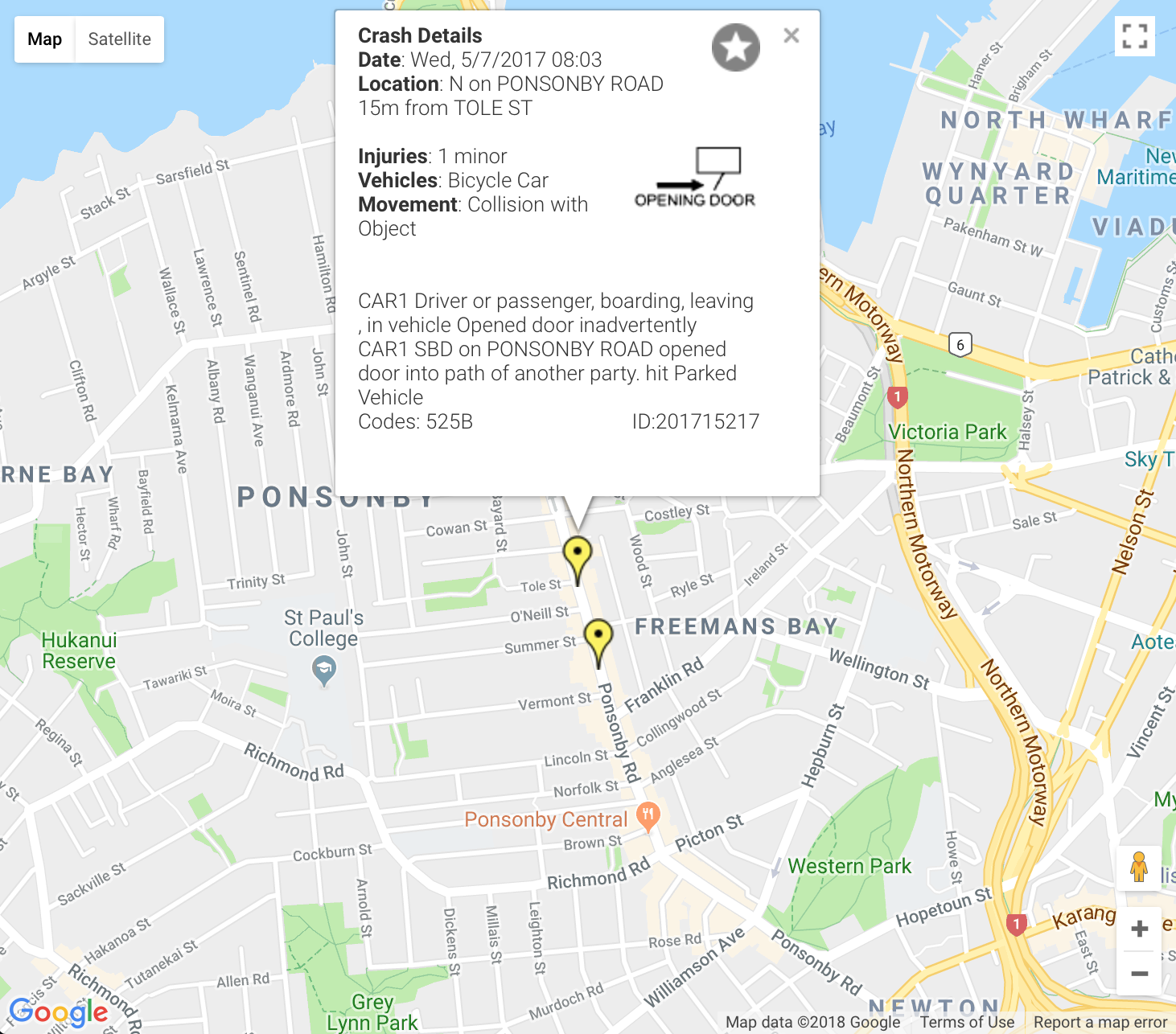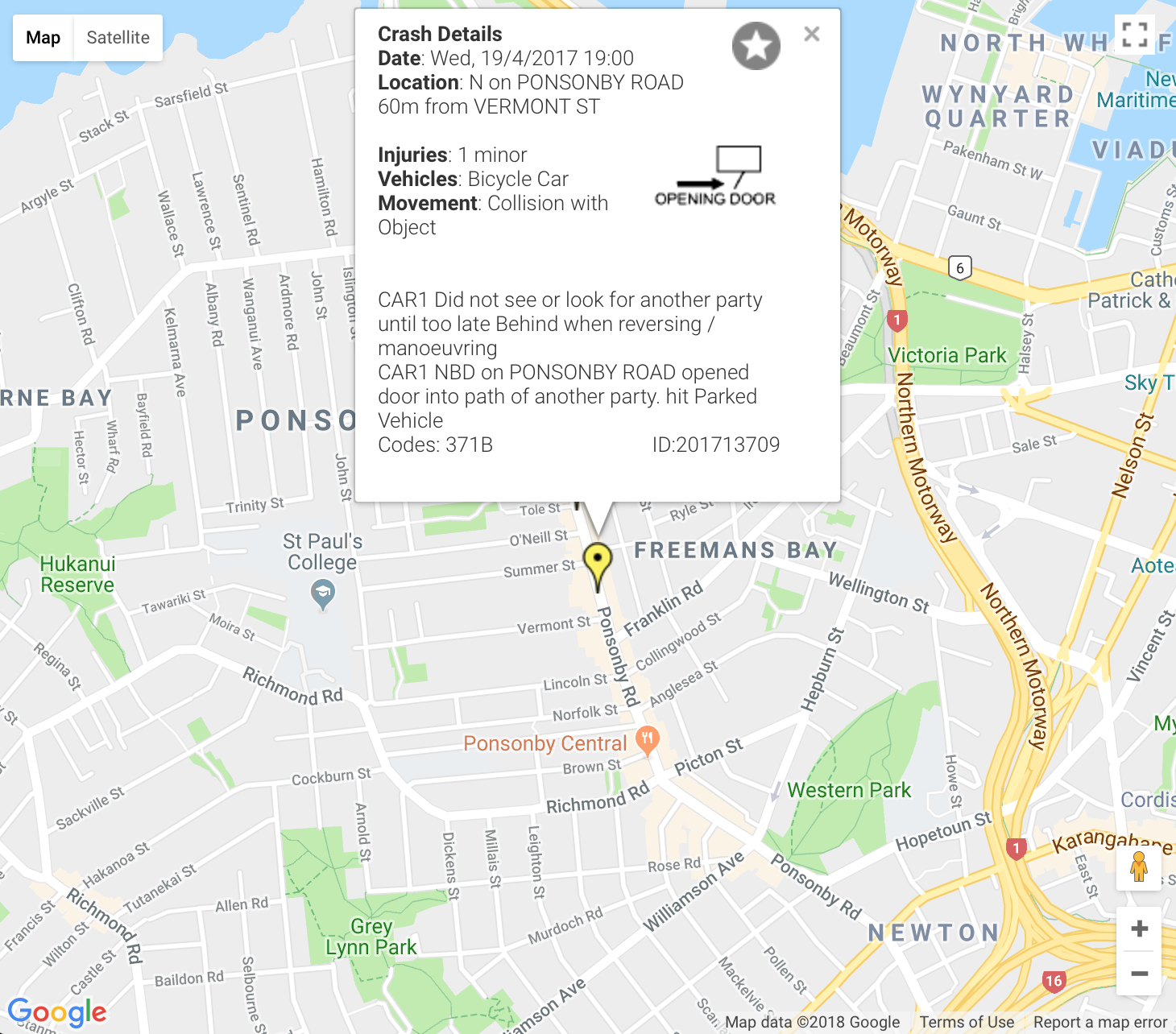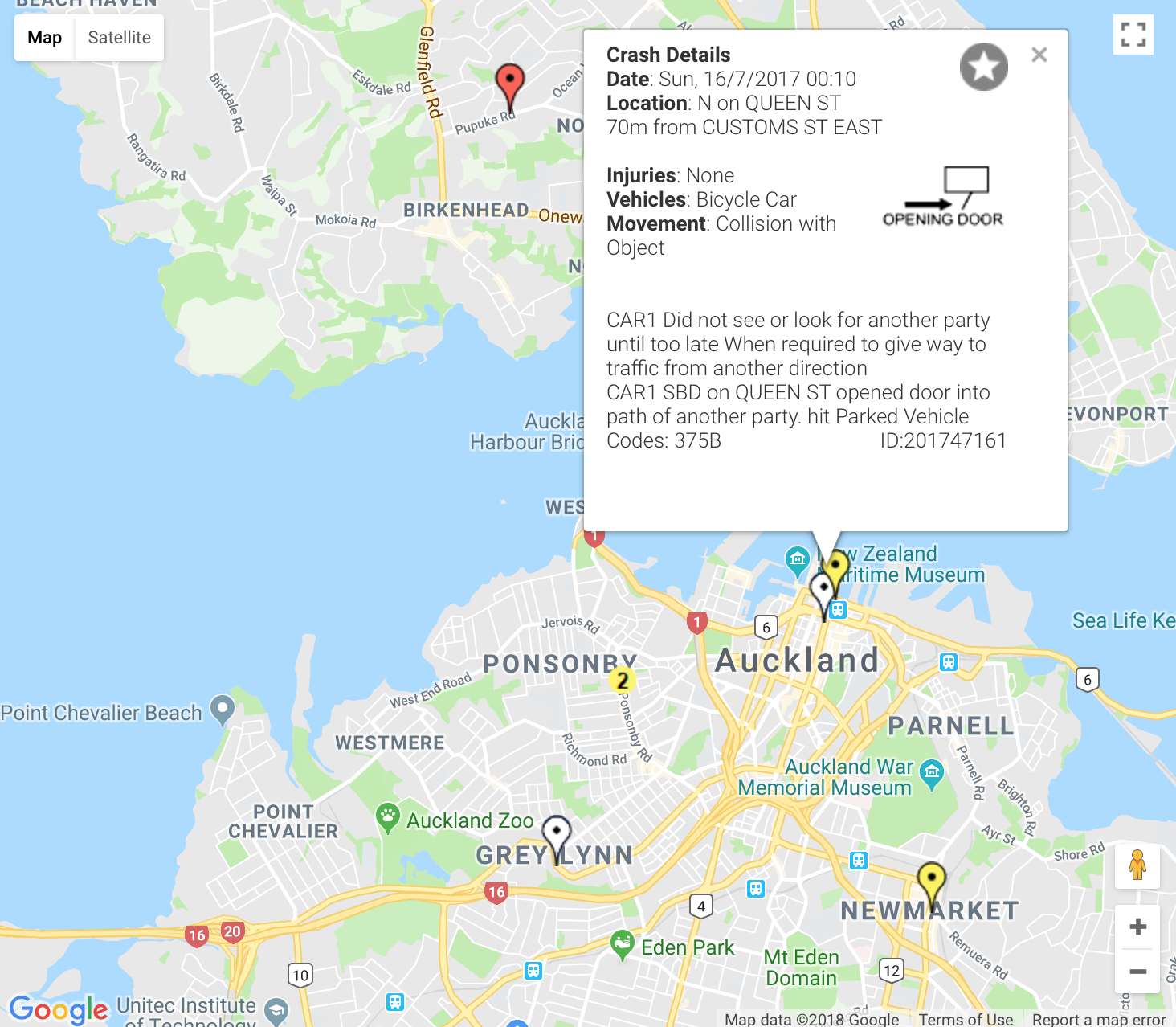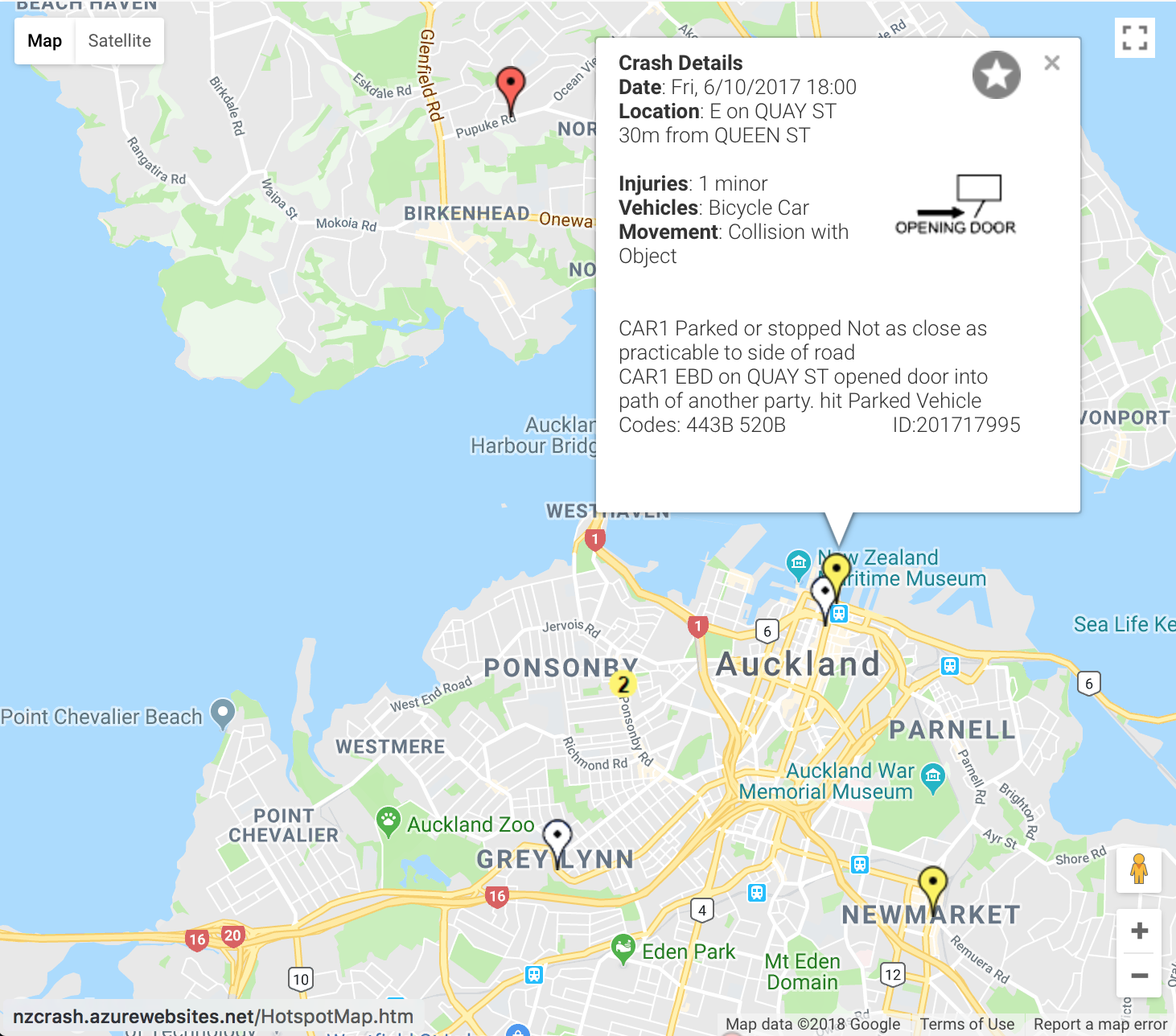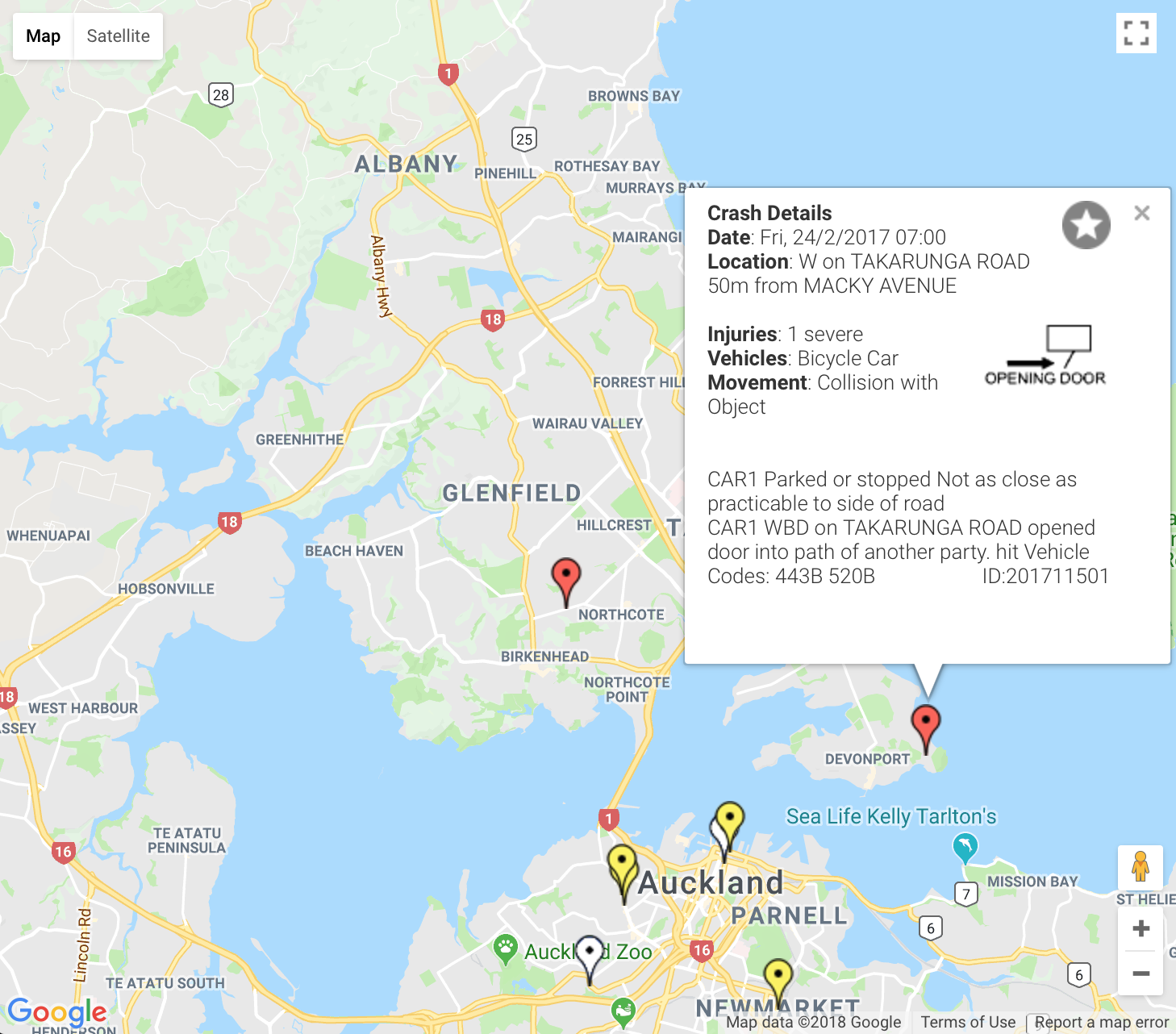We welcome Auckland Transport’s recent media release last week, acknowledging the horrific increase since 2014 in deaths and serious injuries for people using AT’s road network (as laid out in the independent safety report commissioned by the AT board). It’s painful but necessary to have this out in the open, and Greater Auckland covered the topic well in a recent blog post.
We especially welcome the proposed response, which is that AT will massively ramp up its spending to create safer roads, joining Minister Genter’s commitment to Vision Zero.
I’m keen to hear from you how the extra cycling safety dollars could be used most effectively.
While you think about it, I’d like to get your response on a safety issue that Bike Auckland and Bike Kaipatiki are discussing yet again with AT: the southern end of the Northcote Safe Cycle Route.
1. A troubling design
Back in October 2016, we explained our major concerns about the poor design of the Lower Queen St section of the NSCR project between the Bridgeway Theatre and the Ferry Terminal. Simply put, we noted that the planned cycle bypasses would direct people on bikes too close to parked cars and into a risk of dooring. We were also unconvinced the planned traffic humps would effectively slow traffic to consistently safe speeds.
When we’re unable to fully endorse a project, we work hard to suggest improvements so we can ‘endorse with minor changes’, or ‘endorse but please increase the scope later’. However, every now and then, we come up against proposed designs which deviate so far from sound engineering judgement (or are based on a poor analysis of data) that they have to be called out in the interests of both our members, the cycling community, and AT’s credibility. This was one of those times.
On the basis that this route needed a safer design and that it has future significance as a major access to and from SkyPath, we encouraged you to send your feedback in. (For efficiency’s sake, we used a quick feedback form on this website, then compiled and sent though the 400 individually written responses as one document. It’s worth noting that in the subsequent consultation report, your 400 individual comments were tallied as a single piece of feedback, and discussed and counted separately from the residents’ survey).
2. AT builds the design – and gets a negative safety audit
Construction of the whole project began last April; and is now almost finished, after remarkably slow delivery (the original delivery date was mid 2017). With the Lower Queen St section completed, we reminded AT that a safety audit had been promised. This was duly carried out, and we received a copy in October 2017.
We were unsurprised to hear that the safety audit classified the problems we identified in the design of the speed humps and cycle bypasses as serious safety risks.
3. AT stands by the design, says risk frequency is ‘vastly overstated’
In the past month, we’ve raised these concerns again with AT, but we remain frustrated by the failure to achieve any real change here.
The most recent reply from AT was quite lengthy, and clearly hoped to settle our minds. But I’m wondering whether our perceptions of safety are so vastly at odds that we occupy different worlds and speak different languages.
AT is happy for us to post the response, so here it is in full.
The post construction road safety audit identified a problem, near to the locations of cycle bypasses, from drivers opening car doors into the path of people on bikes. This problem was assessed as being of a serious nature, i.e. one that is likely to result in a death or serious injury (DSI) every couple of years or so. It was felt by AT that the problem had been correctly identified, however the severity of any collisions and their frequency in occurring has been vastly overstated. This could lead to solutions being developed that are disproportionate to the risk that they are trying to mitigate.
Following this, my Road Safety and Walking and Cycling teams worked with the project delivery team and undertook an assessment to verify the risk rating and consider mitigation options for the risk identified. A number of options were considered, which was also discussed with members of our ELT [Executive Leadership Team]. We ranked the risk as Minor, for the specific reasons outlined below. The problem does exist however, and a solution appropriate to the level of risk has been identified. This involves providing a road marking buffer that safely guides bike riders past parked cars in the vicinity of the cycle bypasses into the bypasses. If cycling numbers increase along Queen Street, which would increase the level of risk of this type of collision occurring in the future, then AT will re-examine the scheme and provide further mitigation as necessary. The buffer road markings will be installed early next week.
Risk Assessment
The independent road safety audit was undertaken using the NZTA guidelines including that for risk assessing hazards. The audit rated the dooring hazard as “Serious” using the NZTA risk assessment matrix. This means that a dooring incident would be a frequent occurrence (one crash in every year or two) and is likely or highly likely to result in death or serious injury.
Recent surveys have found that approximately 50 people on bikes travel along Queen Street in each direction, south of King Street, each day (approximately 100 per day both directions) and that the vast majority at speeds less than 25km/h. The number of vehicles using the road at this location varies between 1200 and 1800 (both directions) per day and the vast majority of speeds of these vehicles, at the cycle bypasses, has dropped to 36km/h and less, as a result of the traffic calming measures that were installed. National and international research has determined that the risk of pedestrians and people on bikes being killed or seriously injured in a collision substantially decreases at speeds lower than 40kph.
It is also noted that Auckland-wide there are on average two DSI’s [Deaths or Serious Injuries] per year across the entire network incurred by bike riders from dooring. We have almost 4 million recorded cycle trips per year and those are only where we have traffic counters. There are far more cycle journeys than this occurring on the Auckland road network. This would indicate that serious cycle crashes related to dooring are relatively uncommon across the network. [our emphasis]
Queen Street is a residential street with low parking turnover; therefore there is a very low potential for dooring. In light of the surveyed moderate to low traffic and cycling volumes and speed any dooring incident is highly unlikely to result in a DSI. The correct risk rating for this safety issue should have been Minor, not Serious.
4. We say: dooring is a clear and present danger, and a single death or injury will be too many
While we always value the chance to work closely with AT’s numerous departments involved in cycling design and delivery, we are frustrated by the time and resources that this Lower Queen St project is soaking up.
We dispute AT’s view of ‘the facts’, question their assessment of the impact of even near-misses on people who ride, and challenge their understanding of the need to make this section of road safer and more attractive for all people on bikes, aged 8-80.
I’ve replied to AT, saying:
- AT is wrong to classify this section of the street as residential. It is home to a popular all-day café, a successful restaurant as well as the tavern and the picture theatre, and is also the only route to the Northcote ferry terminal. These commercial activities generate more frequent on-street parking turnover than is found on residential streets.
- Vehicles travelling to ferries commonly include passengers who are running late and being driven to a ‘kiss and ride’ park. While they make up a small percentage of ferry traffic, they represent distracted drivers who are hazardous to people on bikes.
- Severe injuries to those cycling and walking are acknowledged by all transport agencies including AT to be significantly under-reported (and minor injuries are very significantly under-reported: see FAQ here). So it’s unacceptable to rely on the official statistics to argue in favour of a road design that AT’s own consultant’s safety report rates as posing a ‘Serious’ risk. Indeed, this makes a farce of AT’s new safety approach based on Vision Zero.
- Serious injuries are classified as those that require admission to hospital and may include “fractures, concussions, internal injuries, crushings, severe cuts and lacerations, severe general shock necessitating medical treatment and any other injury involving removal to and detention in hospital” (see fact sheet here).
On top of these, we need to be cognisant of bruising, dental damage and other traumatic injuries that are disabling to the injured party – and are very common results of dooring incidents – but are counted as “minor” and/or frequently do not make it into official accident statistics at all. See here for just one story of the “minor” damage that dooring can do to a person. - Finally, I reminded AT that I was a witness at the Coroner’s Inquiry into the death of Jane Bishop, who died on Tamaki Drive after being doored and falling under the the wheels of a moving truck. It happened 6 years ago, and will resonate with me forever. It was a ghastly, avoidable death.
- Bike Auckland refuses to accept unsafe biking infrastructure in any form. For us, Lower Queen St is an easy, cheap fix that needs to happen without further debate.
5. Where to from here?
AT hasn’t yet done the work it promised in early May to install buffer markings at the cycle bypasses – and aside from waiting for that, we appear to be at an impasse for any further improvements. We’re fed up.
We know from the experiences of many friends and whanau that AT is not talking our language on road safety on Lower Queen St – and on many other streets across Auckland. Help them to understand our reality of biking Auckland streets.
Please tell us your experiences of Northcote’s Lower Queen St: does this design pass muster as it stands, or do serious safety risks remain?
Also – help AT understand the impact of dooring incidents in particular, and near-misses in general. What are your experiences?
Via Crash App, below are just some of the bicycle dooring incidents across Auckland that made it into the official record in 2017, including two severe injuries – and a whole lot of ‘minor’ ones. Were any of these you? How did it affect you?

